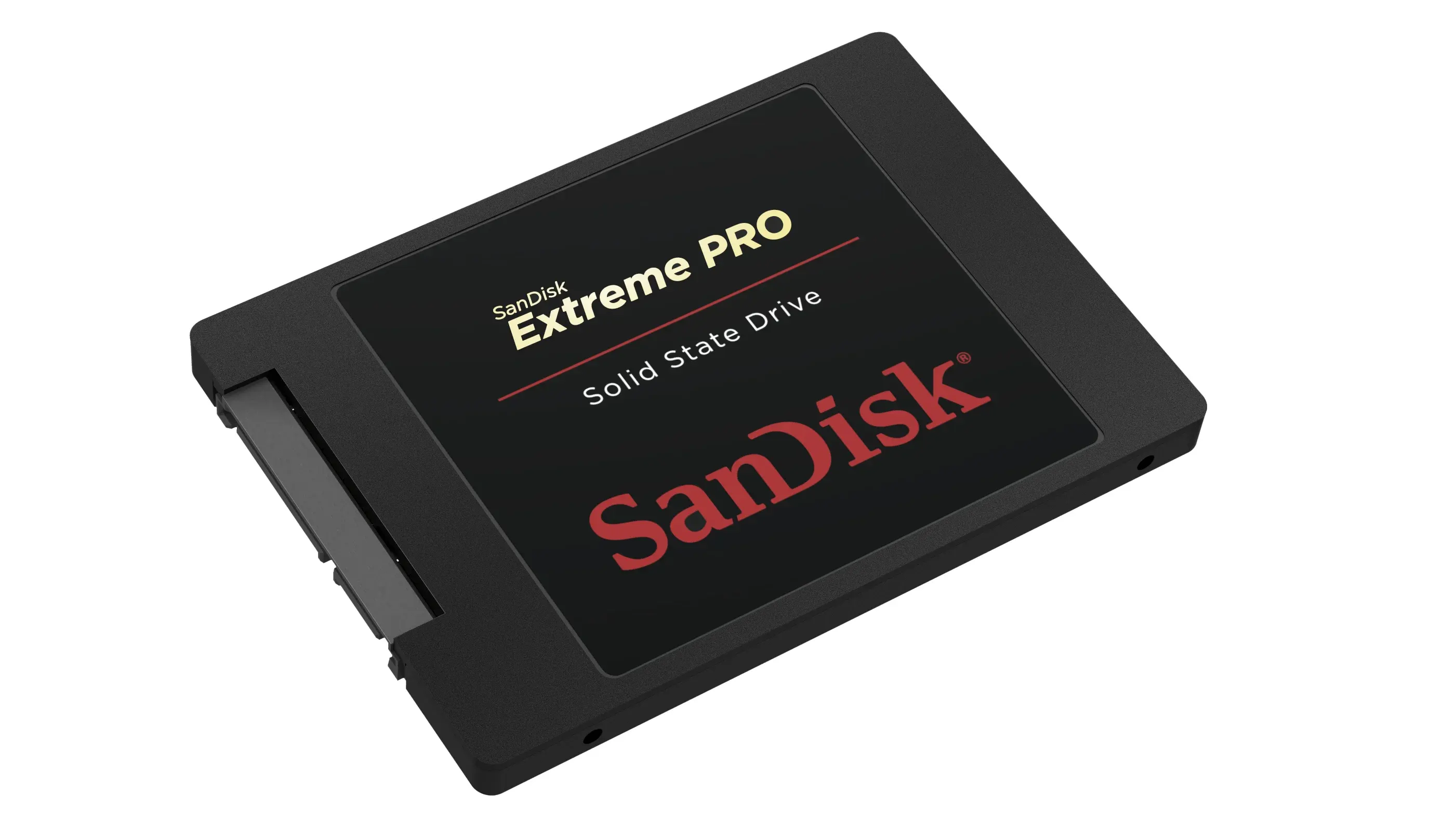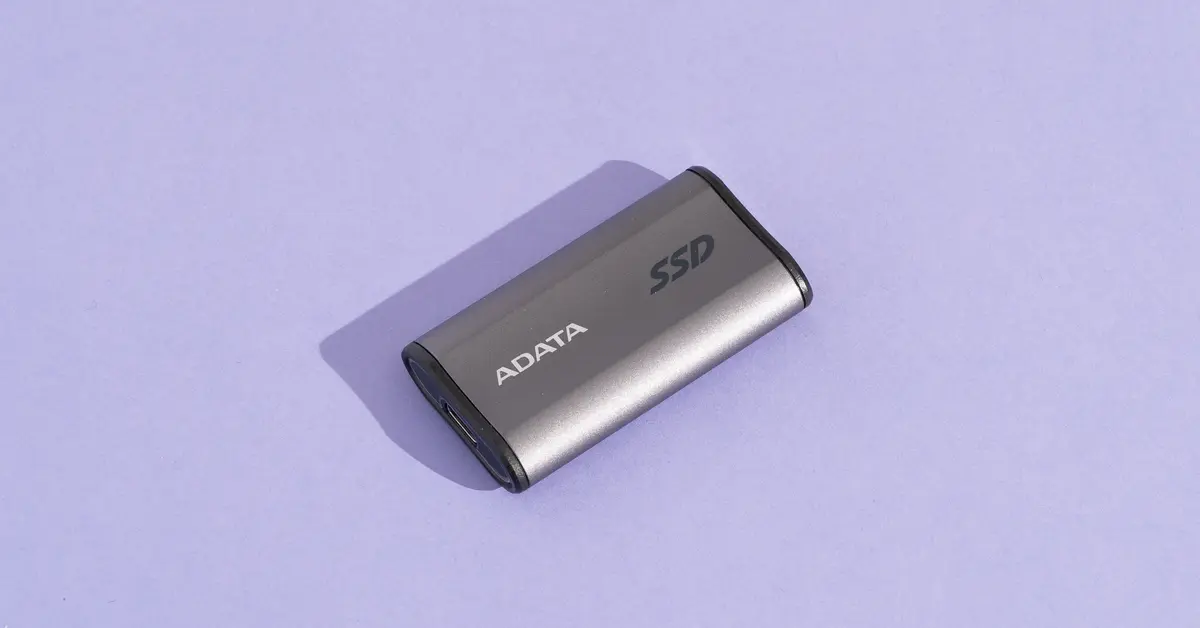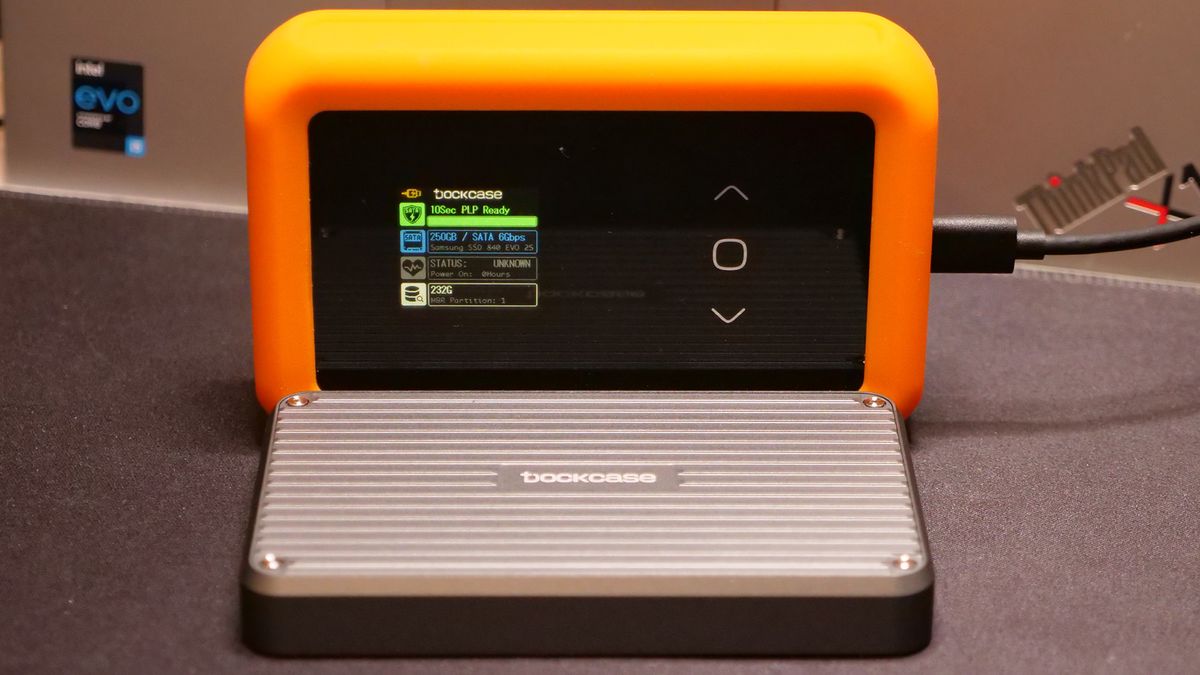Introduction
The continual advancement of technology has revolutionized the way we store and access data. Solid-state drives (SSDs) have become increasingly popular due to their superior performance and faster data transfer rates compared to traditional hard disk drives (HDDs). However, one significant concern for consumers is the relatively high cost of SSDs compared to HDDs. Many individuals wonder when SSD prices will finally go down and become more affordable for the average user.
As technology progresses, SSD prices have indeed been gradually decreasing over time. However, several factors influence the pricing of SSDs, and understanding these factors is crucial in predicting when SSD prices will become more affordable.
In this article, we will explore the various factors that affect SSD prices. We will examine the impact of technological advances, market demand, competition among manufacturers, and historical price trends in the SSD market. By analyzing these factors, we will attempt to forecast when consumers can expect a significant drop in SSD prices.
Before delving into the details, it is essential to note that the pricing of SSDs can vary depending on several factors, including the storage capacity, brand, and model. Higher capacity SSDs typically come at a higher price point, while newer models tend to be more expensive due to their improved performance and features. Therefore, when discussing SSD prices, it is crucial to consider these variables and the overall trends in the market.
Now, let’s explore the factors that impact SSD prices and determine when we can expect a decrease in costs that make SSDs more accessible to a broader range of consumers.
Factors Affecting SSD Prices
Several factors have a significant impact on the pricing of solid-state drives (SSDs). These factors include technological advances, market demand, and competition among manufacturers. Let’s take a closer look at each of these factors to understand how they influence SSD prices.
Technological Advances and SSD Prices:
Technological advancements play a crucial role in determining SSD prices. As technology continues to evolve, manufacturers develop more efficient and cost-effective methods of producing SSDs. This results in lower production costs, which can eventually lead to a decrease in SSD prices.
Newer generations of SSDs often offer improved performance and higher storage capacities. However, when these new models are initially released, they tend to have higher price points. Over time, as the technology becomes more widespread and production becomes more efficient, prices for these newer models start to decline, making them more affordable for consumers.
Market Demand and SSD Prices:
Market demand plays a vital role in determining SSD prices. When SSDs were first introduced to the market, their high prices made them a luxury item accessible only to a limited number of consumers. However, as demand increased and more users recognized the benefits of SSDs over HDDs, manufacturers ramped up production to meet this growing demand.
As the demand for SSDs continues to rise, manufacturers can take advantage of economies of scale, resulting in lower production costs. This, in turn, can lead to decreased SSD prices as manufacturers strive to attract a more extensive customer base by offering more affordable options.
Competition among SSD Manufacturers:
Competition among SSD manufacturers is another key factor in determining prices. As more companies enter the SSD market, they vie for consumer attention by offering competitive pricing and innovative features. This competition drives manufacturers to continuously improve their production processes and technologies, leading to cost reductions.
When manufacturers compete, they often strive to provide more affordable SSDs without compromising on quality. This healthy competition creates a favorable environment for consumers as it pushes companies to develop cost-effective solutions, ultimately leading to price reductions across the market.
By considering these factors, it becomes evident that technological advances, market demand, and competition among manufacturers all play crucial roles in influencing SSD prices. Understanding these factors is essential in predicting the future pricing trends of SSDs. In the next sections, we will examine historical price trends in the SSD market and attempt to forecast when consumers can expect a significant decrease in SSD prices, making them more accessible for a wider range of users.
Technological Advances and SSD Prices
Technological advances have a significant impact on the pricing of solid-state drives (SSDs). As new technologies and manufacturing techniques are developed, the cost of producing SSDs decreases, ultimately leading to lower prices for consumers.
One key aspect of technological advancement is the development of more efficient NAND flash memory technology. NAND flash memory is the primary storage component of SSDs. Over the years, there have been significant advancements in NAND flash memory technology, such as the transition from single-level cell (SLC) to multi-level cell (MLC) and now the emerging triple-level cell (TLC) and quad-level cell (QLC) technologies.
Each iteration of NAND flash memory technology offers higher storage densities at lower costs. For example, SLC NAND had lower storage densities but higher reliability and longevity, making it more expensive. As the industry progressed to MLC, TLC, and QLC, storage capacities increased while manufacturing costs decreased. Manufacturers can now produce SSDs with larger storage capacities at relatively lower prices, making them more accessible to consumers.
Another technological advancement that affects SSD pricing is the development of controller chips. The controller chip is responsible for managing data transfer, error correction, and overall performance. As advancements in controller chip technology are made, SSDs become more efficient and offer better performance. Additionally, these advancements often lead to cost savings in the manufacturing process, leading to decreased prices for consumers.
Furthermore, improvements in the production process and manufacturing techniques also contribute to the reduction in SSD prices. As manufacturing processes become more streamlined and efficient, manufacturers can produce SSDs at a lower cost per unit. These cost savings can then be passed on to consumers, resulting in more affordable prices.
It is worth noting that the pace of technological advancements in the SSD industry is rapid. New developments and innovations emerge regularly, further pushing the boundaries of what is possible in terms of performance and cost-efficiency. As these advancements continue, we can expect to see a continued decrease in SSD prices, making them more accessible to a broader range of consumers.
In the next section, we will explore the influence of market demand on SSD prices and how it affects the overall affordability of these storage devices.
Market Demand and SSD Prices
Market demand plays a significant role in determining the prices of solid-state drives (SSDs). As more consumers recognize the benefits of SSDs over traditional hard disk drives (HDDs), the demand for SSDs continues to grow. This increasing demand has a direct impact on the pricing of SSDs.
When SSDs were first introduced to the market, their high prices made them a luxury item accessible only to a limited number of consumers. However, as more individuals became aware of the advantages of SSDs, the demand began to rise. This increased demand allowed manufacturers to scale up production to meet the growing needs of consumers.
As the demand for SSDs continues to surge, manufacturers can take advantage of economies of scale. Higher production volumes enable manufacturers to optimize their production processes and negotiate better deals with component suppliers. These factors contribute to reduced production costs, allowing manufacturers to offer SSDs at more affordable prices.
Moreover, market demand drives competition among manufacturers. As more companies enter the SSD market, they vie for consumer attention by offering competitive pricing and innovative features. This competition forces manufacturers to continually improve their production processes and technologies, resulting in cost reductions.
Additionally, as the demand for SSDs grows, manufacturers can improve profit margins through bulk sales to organizations and businesses that require large-scale storage solutions. These bulk sales help manufacturers offset the costs associated with research and development, further enabling them to offer SSDs at more reasonable prices in the consumer market.
The increasing popularity of SSDs in various sectors, including personal computing, gaming, data centers, and enterprise storage, contributes to the overall market demand. As more applications and industries adopt SSDs as the preferred storage solution, the demand will continue to rise. This sustained demand will drive manufacturers to innovate and optimize production, ultimately leading to more affordable SSD prices for consumers.
It is important to note that market demand can fluctuate, influenced by factors such as economic conditions, technological advancements, and emerging storage technologies. However, the overall upward trajectory of SSD demand suggests that the trend of decreased prices will likely continue in the coming years.
In the next section, we will explore the role of competition among SSD manufacturers in influencing prices and making SSDs more accessible for a broader range of consumers.
Competition among SSD Manufacturers
Competition among solid-state drive (SSD) manufacturers plays a crucial role in determining prices and making SSDs more accessible to consumers. As more companies enter the SSD market, the level of competition increases, prompting manufacturers to innovate, improve their products, and offer competitive pricing.
One key effect of competition is the drive for manufacturers to continuously improve their production processes and technologies. As companies compete for market share, they invest in research and development to develop more efficient manufacturing techniques. These advancements lead to cost savings in the production process, allowing manufacturers to offer SSDs at lower prices without compromising quality.
Moreover, competition among manufacturers drives innovation and the development of new features and technologies. Each manufacturer seeks to differentiate themselves from their rivals by offering unique features and improved performance. This competition encourages manufacturers to invest in advancements such as faster data transfer rates, higher storage capacities, and enhanced durability.
As the market becomes more saturated with SSD manufacturers, companies are compelled to offer competitive pricing to attract a larger customer base. Lowering prices can help manufacturers increase market share and capture the attention of budget-conscious consumers. This dynamic leads to a downward pressure on SSD prices, benefiting consumers who are seeking more affordable storage solutions.
Additionally, competition prompts manufacturers to provide better customer support and warranties. Companies strive to offer superior after-sales service to differentiate themselves from their competitors. This customer-centric approach not only enhances the overall consumer experience but also contributes to the overall value offered by manufacturers.
Furthermore, as the number of manufacturers in the SSD market increases, partnerships and collaborations between companies become more prevalent. These alliances can lead to technology sharing and improved production capabilities. Collaboration efforts help manufacturers reduce costs and offer more competitively priced SSDs to consumers.
The intense competition in the SSD market is fueled by the growing demand for high-performance storage solutions. As more industries and individuals recognize the advantages of SSDs over traditional hard drives, the demand continues to rise. This sustained demand provides a fertile ground for competition among manufacturers, resulting in price reductions and increased accessibility for consumers.
In the next section, we will examine historical price trends in the SSD market to gain insights into the patterns and factors that influence SSD pricing.
Price Trends in the SSD Market
The solid-state drive (SSD) market has experienced significant price fluctuations over the years due to various factors, including technological advancements, market demand, and competition. Understanding the historical price trends in the SSD market can provide valuable insights into the patterns and factors that influence SSD pricing.
When SSDs were first introduced, their prices were considerably higher compared to traditional hard disk drives (HDDs). This pricing disparity was mainly due to the higher manufacturing costs associated with the new technology and limited production volumes. As a result, SSDs were initially considered a premium storage option primarily utilized by professionals and enthusiasts who required high-performance storage solutions.
However, as time progressed, advancements in technology and increased market demand led to a gradual decline in SSD prices. Technological developments, such as improved NAND flash memory technology and more efficient manufacturing processes, allowed manufacturers to produce SSDs at a lower cost per unit.
Another factor contributing to the downward trend in SSD prices is the increasing competition among manufacturers. As more companies entered the market, competition intensified, prompting manufacturers to offer more affordable options to attract customers. This competitive environment, coupled with economies of scale, led to further cost reductions and price drops in the SSD market.
Furthermore, as SSDs gained popularity and started appearing in consumer electronic devices, such as laptops and desktops, the demand for SSDs surged. The increased demand and broader consumer base further drove manufacturers to scale up production, resulting in more accessible prices for SSDs.
Over the years, SSDs have become increasingly affordable, with prices continuing to decrease while storage capacities and performance continue to improve. Today, consumers can find a wide range of SSD options at varying price points, allowing them to choose according to their budget and storage needs.
It is important to note, however, that while SSD prices have significantly decreased, there may still be variations based on factors such as storage capacity, brand, and model. Higher-capacity SSDs generally come at a higher price point, and newer models with advanced features may have a premium price tag. However, even these higher-priced options often become more affordable over time as newer models are released and competition drives prices down.
Overall, the historical price trends in the SSD market indicate a continuous decline in prices due to technological advancements, increasing market demand, and competition among manufacturers. As such, consumers can expect SSD prices to become more budget-friendly as the technology further matures and becomes mainstream.
In the next section, we will attempt to forecast when consumers can expect a significant drop in SSD prices, making them even more accessible to a wider range of users.
Forecast: When Will SSD Prices Go Down?
The continual decline in solid-state drive (SSD) prices over the years is a promising indication for consumers. As technology continues to advance and market demand grows, SSD prices are expected to become even more affordable. While it is challenging to predict exact timelines and price points, several factors can help us forecast when consumers can expect a significant drop in SSD prices.
Technological advancements and innovation play a crucial role in driving down SSD prices. As NAND flash memory technology continues to evolve, storage capacities increase, and production costs decrease. Additionally, advancements in controller chip technology and manufacturing techniques contribute to cost reductions. As these technologies mature and become more widespread, SSD prices are likely to decrease further.
Market demand is another key factor in the price forecast. With growing adoption of SSDs across various industries and applications, the demand for these storage devices will continue to rise. As more consumers recognize the benefits of SSDs, manufacturers will scale up production to meet the increasing demand. This increased production volume, combined with intense competition among manufacturers, will contribute to lower SSD prices.
Competition among SSD manufacturers is expected to intensify as more companies enter the market. This competition will drive manufacturers to develop more cost-effective production methods and strive for competitive pricing. Additionally, collaborations and partnerships between manufacturers may lead to further cost savings and price reductions.
It’s important to note that while SSD prices have been steadily decreasing, there may be fluctuations due to external factors such as component shortages or changes in production costs. These temporary fluctuations should not overshadow the overall trend of decreasing SSD prices.
Several industry experts and analysts predict that SSD prices will continue to decline in the coming years. Some forecasts suggest that in the next 2-3 years, SSD prices could decrease by around 20-30%. The decreasing prices, coupled with improvements in performance and storage capacities, will make SSDs an even more attractive option for consumers.
However, it is essential to consider that price reductions may not occur uniformly across all SSD models and capacities. Higher-capacity SSDs generally have a higher price premium due to the higher cost of NAND flash memory. It is likely that lower-capacity SSDs will see more significant price drops and become increasingly affordable for consumers.
In summary, while it is challenging to provide an exact timeframe and price point, the forecast for SSD prices is optimistic. Technological advancements, increasing market demand, and competition among manufacturers indicate a continued downward trajectory for SSD prices. As a result, consumers can anticipate more affordable SSD options in the near future, allowing for widespread adoption of these high-performance storage devices.
Conclusion
The pricing of solid-state drives (SSDs) has seen a significant decline over the years, making them more accessible and affordable for consumers. Technological advancements, including NAND flash memory improvements and efficient production processes, have contributed to the decrease in SSD prices. Additionally, the growing market demand and competition among manufacturers have intensified the downward trend in pricing.
As SSD technology continues to evolve, with higher storage capacities and improved performance, SSD prices are expected to further decrease. Advancements in NAND flash memory technology and controller chips, combined with streamlined manufacturing techniques, will lead to cost savings for manufacturers. This, in turn, will allow them to offer SSDs at lower price points while maintaining high-quality standards.
Furthermore, increasing market demand and competition among manufacturers will continue to drive down SSD prices. As more industries and consumers recognize the benefits of SSDs over traditional hard disk drives, the demand for SSDs will grow. Manufacturers will scale up production and invest in research and development to meet this demand and remain competitive in the market.
While fluctuations in SSD prices may occur due to external factors, the overall trend points towards decreasing prices. This forecast aligns with industry experts’ predictions of a notable drop in SSD prices within the next few years, making SSDs an even more attractive and affordable storage option for consumers.
Consumers should be aware of the impact of factors such as storage capacity, brand, and model on SSD prices. Higher-capacity SSDs, although more expensive, are likely to see gradual price drops as technology advances. Simultaneously, lower-capacity SSDs and older models are expected to become increasingly affordable for a wider range of users.
In conclusion, the future of SSD prices looks promising for consumers. Technological advancements, market demand, and competition among manufacturers are driving forces behind the continuous decrease in SSD prices. As these trends continue, individuals can expect further cost reductions in SSDs, enabling them to enjoy the benefits of faster data transfer rates and improved performance without breaking the bank.

























